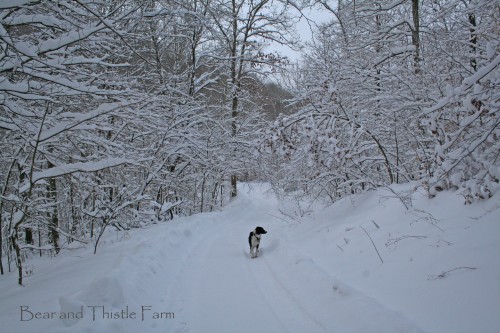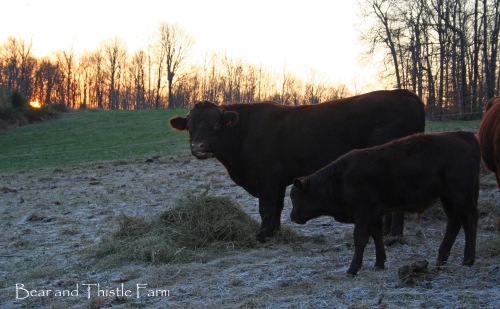Of course, Winter here at the farm didn’t follow close on the heels of Spring, as the time gap between my last posting and this one might suggest. Nor did I fall off the edge of the earth, or give up farming, or run away to the big city. I just got a bit submerged is all, in the work and projects and animal husbandry as the growing season progressed, and lost the thread of storytelling here on the blog. The convenience and simplicity of Facebook updates turned into a lazy habit, and the discipline of composing anything longer than a paragraph simply vanished. Faded away like fog in morning sunlight.
Along with so many other people, I hope to use the New Year as a springboard for getting back to doing things I love, but have let slip out of my regular routine. Like writing here. So let’s get on with the story…
It took awhile for winter to arrive this year. Seemed like Fall just didn’t want to give up and let go; the temps stayed unseasonably warm through most of November, with very little rain. It was great weather for Bear’s usual visit, he doesn’t really like cold and stormy, it interferes with his projects out in the shop. This year he wore short sleeves until the last few days he was here, and never had to hole up inside by the fire with sniffles or a cold as has happened in the past.
And I was very grateful for every extra day of good working weather, using them to catch up on winter prep like filling the woodshed and stuffing another load of horse hay into the hay shelter. Glad I did, too, because this last week, Old Man Winter arrived with a crash and a bang, bringing freezing temps and icy rain and the first snowfall to south-central Kentucky.
Now the focus is on keeping livestock fed and watered, and trying not to fall behind on maintenance chores like removing manure in the horse yards, and spreading it on the pastures. Keeping a good supply of split wood in the shed. Catching up on office work and farm business. Staying healthy, positive and motivated.
It’s hard to say if this winter will be a rough one with lots of snow and cold. The old-timers around here talk a lot about winters being much more rugged when they were young – deep snows, more frequent storms, bitter cold temperatures. I’ve lived and worked in northern Colorado, so I’m no stranger to wintry weather, but it does make everything a little harder, especially on a farm.
And a little harder every year I get older, too. Though I am learning a thing or two every year that makes things go easier, that’s gotta help balance out the aging factor, right?
So let’s see if I can keep the story going this time, because there’s an awful lot of good stuff happening here at the farm and this blog is a great way to journal our progress.
Until next time, then.









